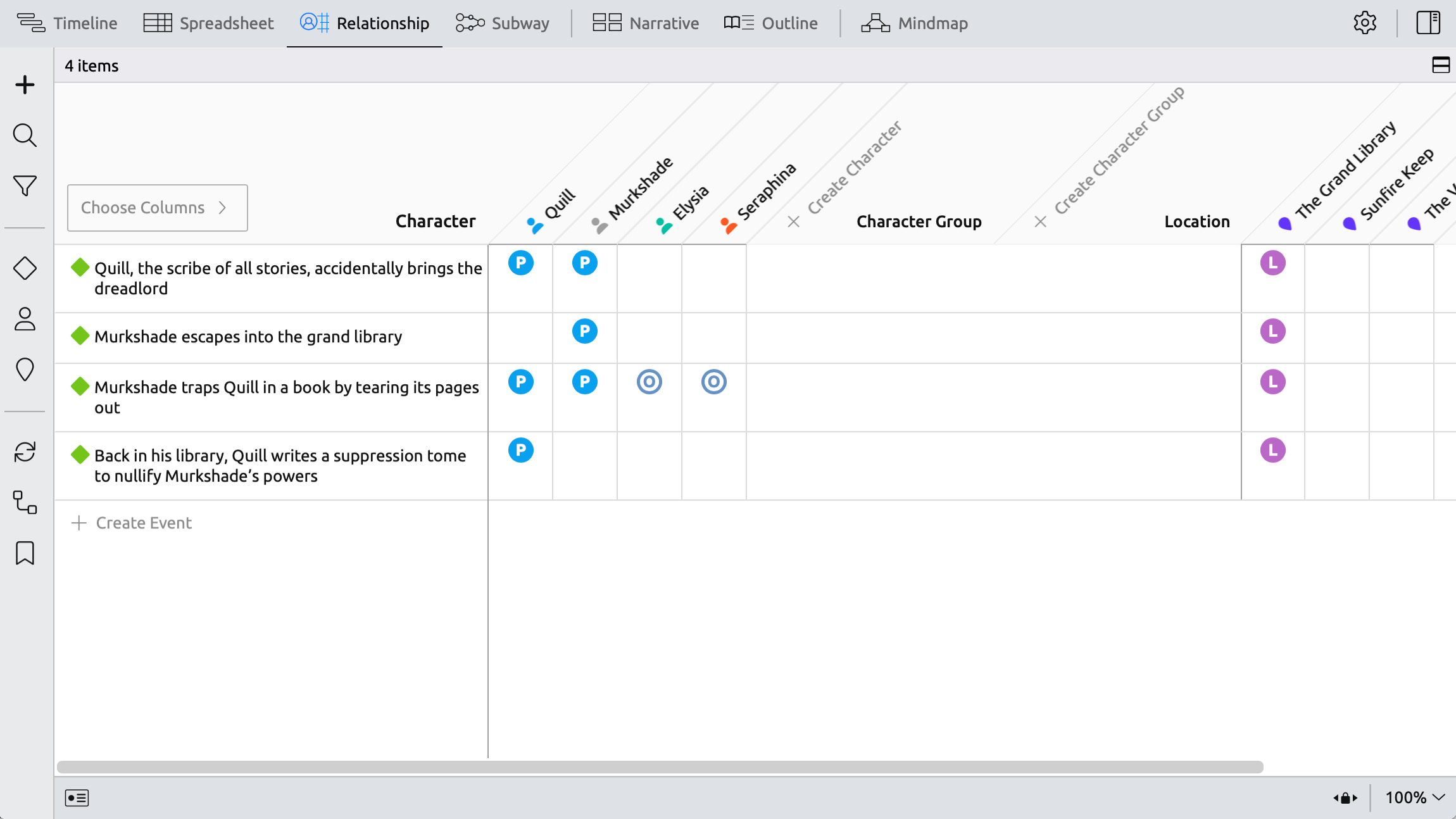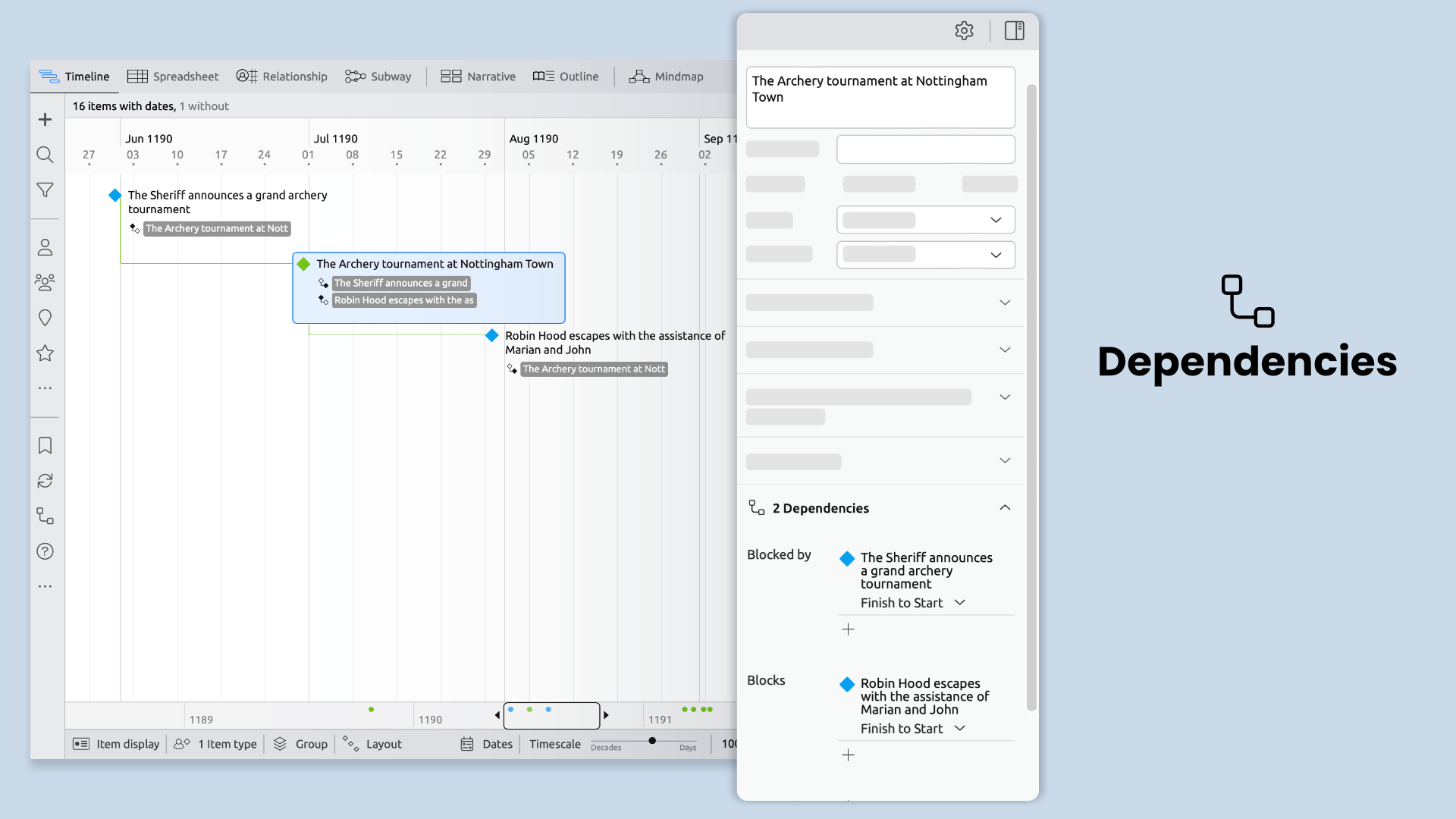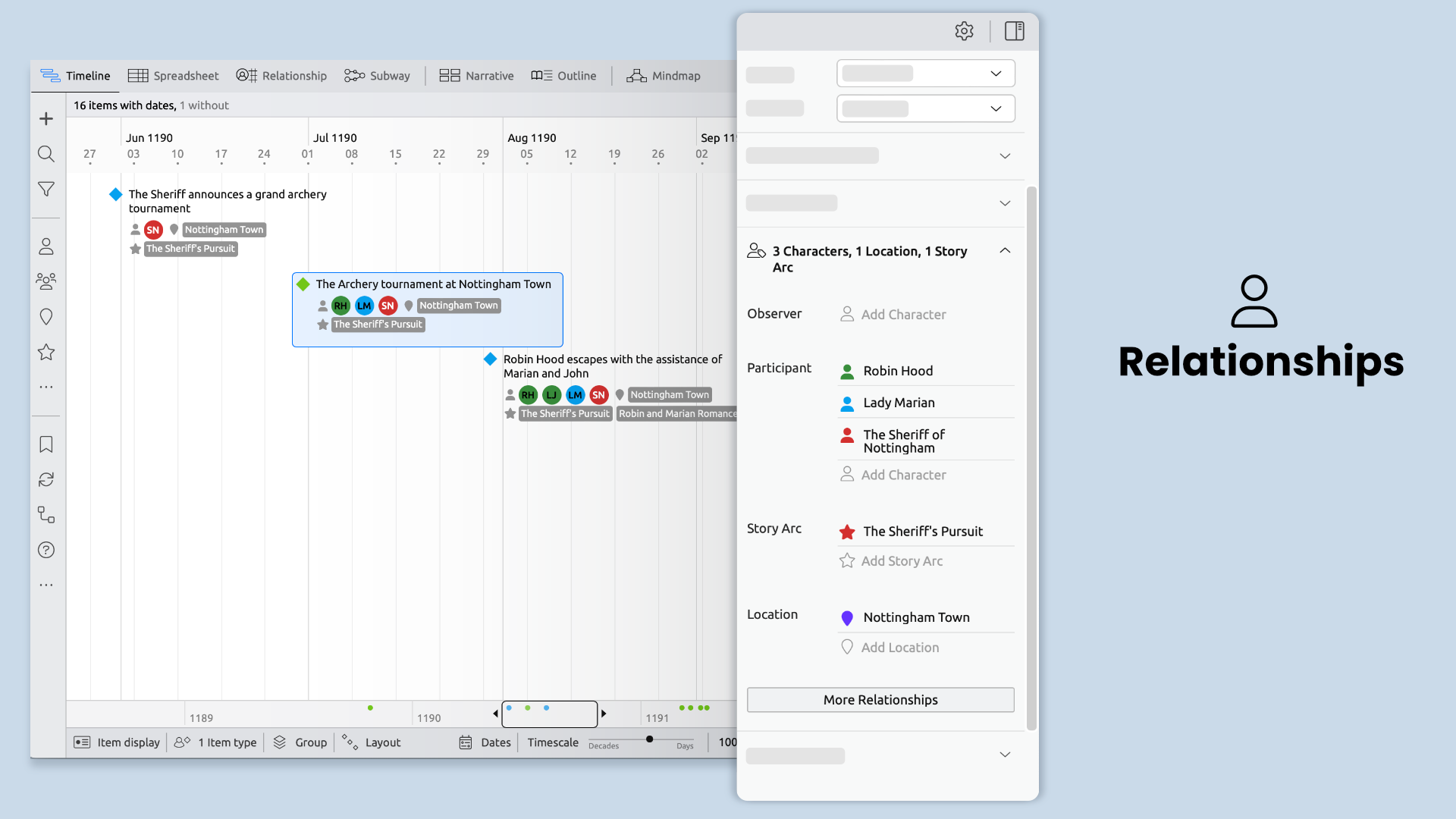Quickstart Guide
Get to know the various ways Aeon Timeline helps you view, edit, and inspect your data
View Selection
There are 7 different views to work with in Aeon Timeline, with each giving you a unique way to view and manipulate the data in your project. Each view presents the items in a different way, but the data within them is all interlinked, so editing an item updates it in every view.
The Timeline view shows a graphical representation of your events in chronological order. You can get in close to analyze the events of a single day, or zoom out to see how things play out over millions of years.
Events won’t appear in the Timeline view if the date fields are empty.

The Spreadsheet view is a familiar way of working for most people, making it an efficient way to add, edit and sort information.
Events can be placed in any order in the spreadsheet view. Even without a date attached.

The relationship view presents the key components of your data in a grid format to help you quickly see who did what, where, and who they were with.
Don’t forget to give new events a date if you want them to show up in your timeline.

The subway view helps you see the common threads between participants in your story. The intersecting tracks highlight the associations between people and events.
Activate as many, or as few tracks as you like to visualize the relationships between people and events.

The narrative view lets you experiment with different storytelling sequences by arranging the pieces in any order without affecting the chronology of events in the main timeline.
Activate as many, or as few tracks as you like to visualize the relationships between people and events.

Item Type Panels
An item can be a task, event, person, team, location, or anything else you need for your project.
The key item types are placed within easy reach in the sidebar for convenient access without the need to switch views or sift through menus.
The item types in each template are just a starting point, so don’t worry if they’re not a perfect fit. You can easily update the name, icon, and color right there in the Side Panel.
Learn more about item types >
Customize the order, appearance, and visibility of item types to make them a perfect match for you, and your project.
Adding Items
There are heaps of different ways to add new items to a project, but using either the add item button or double-clicking a free space on the timeline are good ones to get started with.
When adding new items, date-specific ones such as tasks and events will show up in the timeline view, while others that aren't associated with a date, such as people and locations, can be found in the item panels.
If you've added a task or event and can't find it on your timeline, switch to the spreadsheet view and find it there. Then you can give it a date, or drag it to set the order relative to other events. Even if you don't have a date for it yet.
Inspector Panel
Whenever an item is selected, the inspector panel appears so you can view and edit the various types of information.
Use the panels in the inspector panel to access the data associated with that item.
- Specify that an event must come before, or after something else
- Determine any tasks that block, or are blocked by other tasks

- Who participated in an event, who observed it, where it took place
- Associate a task with a person or project
- Tag legal issues associated with an event or fact

Try Aeon Timeline free for 14 days
Get Aeon Timeline and easily visualize and organize your project.










